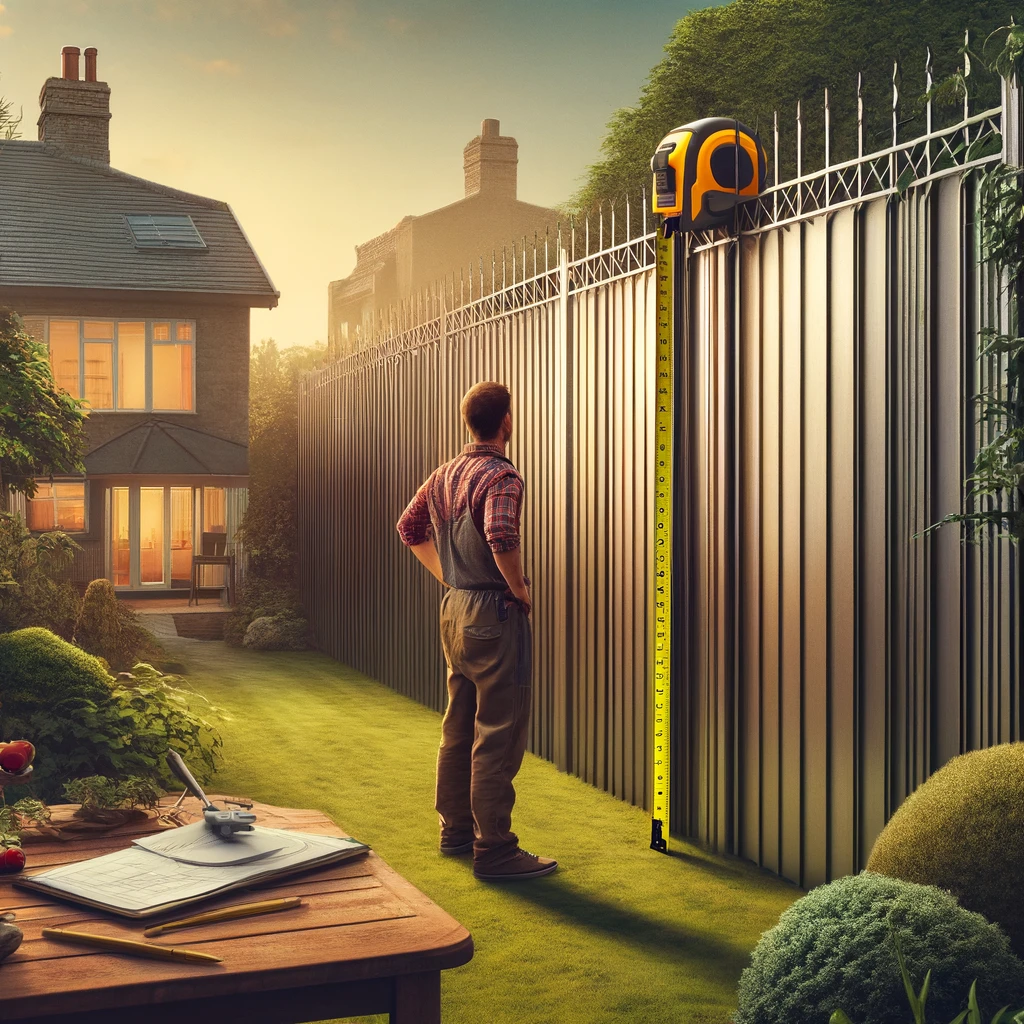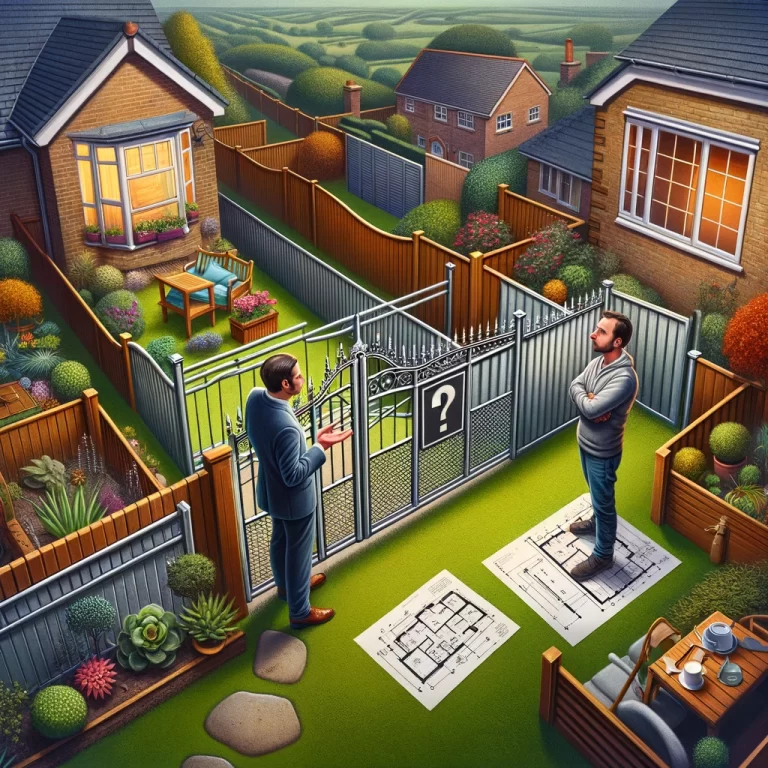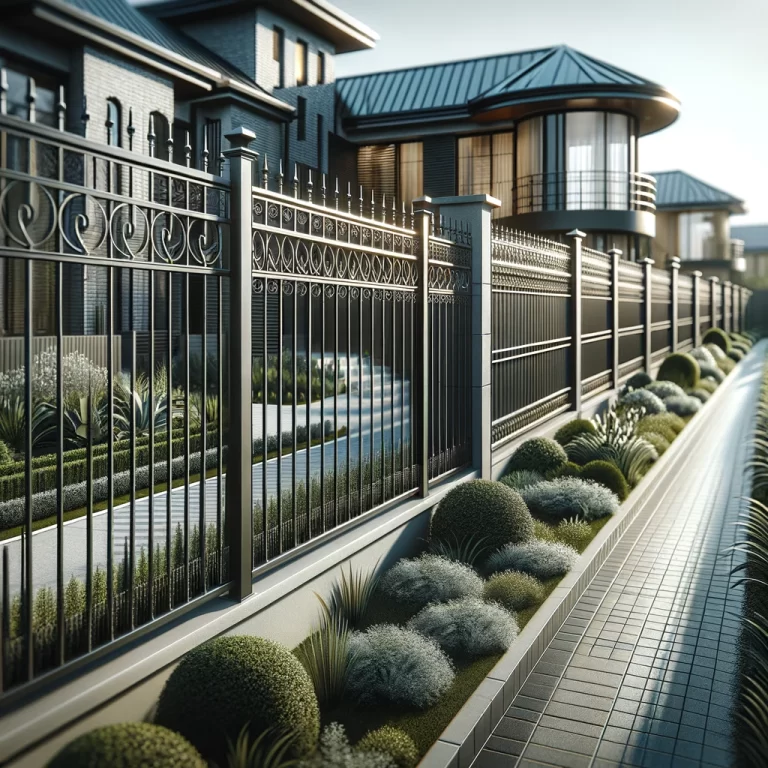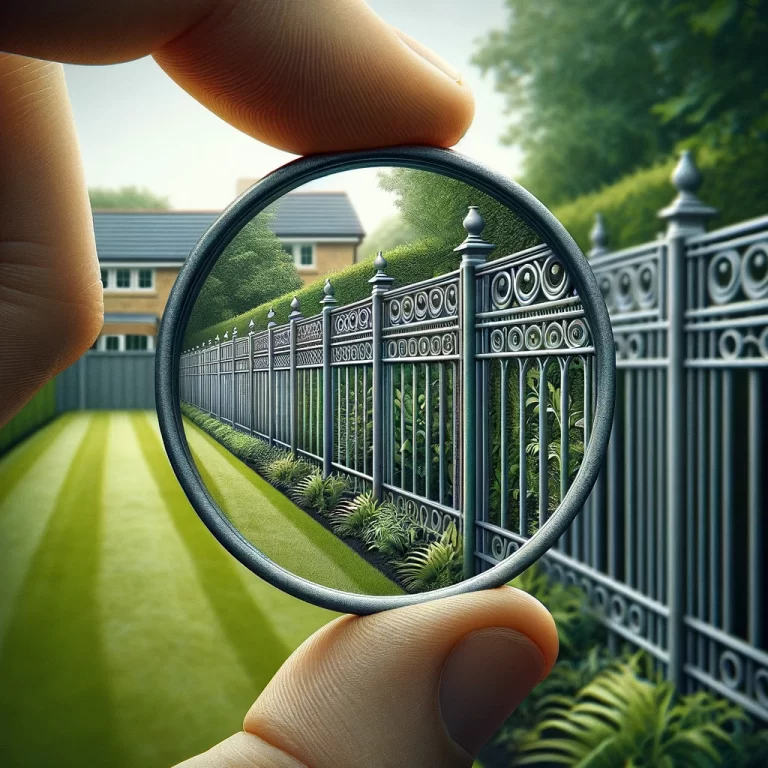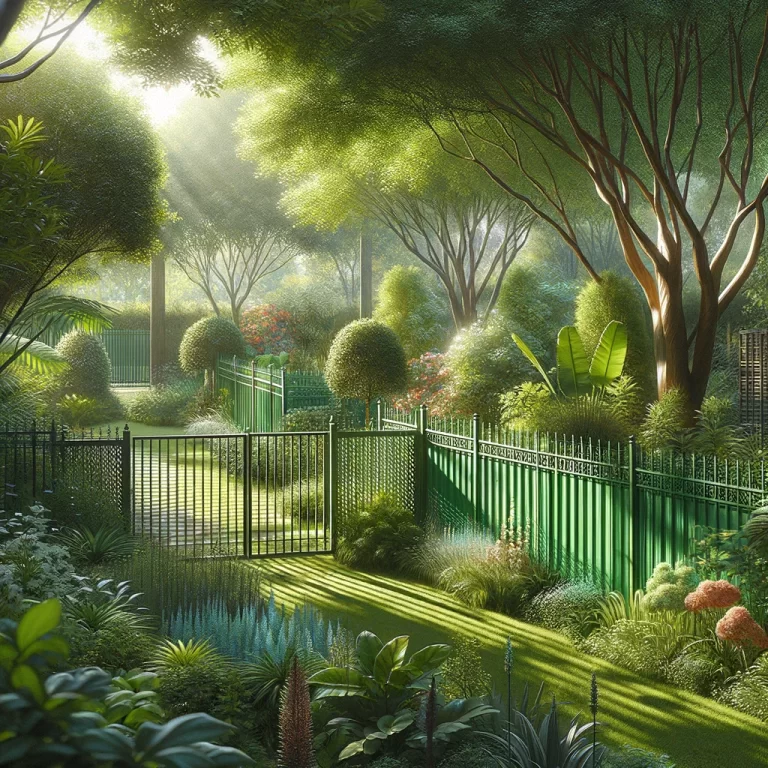Are you looking to add a fence to your property but not sure where to start? With so many options available, it can be overwhelming to choose the right one. In this article, we will explore the different types of fences, factors to consider when choosing a fence, and the easiest fences to install yourself in the UK. Whether you are a seasoned DIYer or a novice, we will provide you with the steps to successfully install a fence on your own. Let’s dive in and find the perfect fence for your needs!

What Is The Easiest Fence To Install Yourself?
When considering fencing options, one may wonder, ‘What is the easiest fence to install yourself?’
DIY fence installation can be a rewarding project for homeowners seeking to enhance their property’s privacy and security. Opting to install a fence yourself not only gives you greater control over the design and materials but also proves to be a cost-effective solution in the long run.
Before embarking on your DIY fence journey, it’s crucial to choose the right type of fence that suits your needs. Factors such as material durability, maintenance requirements, and style preferences should all play a role in your decision-making process.
Keep in mind that simplicity and affordability are key considerations when selecting a fence design. Opting for straightforward designs and commonly available materials can help streamline the installation process and keep costs down.
What Are The Different Types Of Fences?
Fences come in various types, each offering distinct characteristics and benefits.
- Wooden fences are popular for their natural look and versatility that blends well with traditional or rustic themes. They provide privacy and noise reduction but may require regular maintenance.
- uPVC fences, on the other hand, are low-maintenance, durable, and available in various styles and colours.
- Metal fences, like aluminium or steel, offer strength and security with minimal upkeep needed.
- Chain link fences are affordable, low-maintenance, and are often used in commercial or industrial settings.
- Composite fences are a blend of wood fibres and recycled plastic, offering the look of wood with the durability of plastic.
Wood Fences
Wooden fences are a popular choice for their natural appeal and versatility in enhancing garden aesthetics.
- Lap panel fences consist of overlapping horizontal panels, providing privacy and security while blending well with various garden designs.
- Picket fences, on the other hand, feature evenly spaced vertical boards, adding a traditional touch to the property and delineating boundaries in a charming manner.
- Closeboard fencing is known for its durability, as it comprises sturdy vertical boards tightly fitted together, ideal for withstanding harsh weather conditions.
Vinyl Fences
Vinyl fences offer a low-maintenance and cost-effective fencing solution for property owners.
The ease of installation further adds to the appeal of vinyl fencing, making it a convenient choice for homeowners looking to enhance the security and aesthetics of their properties. With its lightweight nature, vinyl fencing can be easily installed without the need for heavy machinery or specialised tools, saving both time and money. The affordability factor of vinyl fencing makes it a practical option for those seeking a durable and long-lasting fencing solution that also adds value to their property.
Metal Fences
Metal fences provide a robust security solution whilst adding a touch of elegance to property boundaries.
One of the main advantages of opting for a metal fence for your property is the durability they offer. These fences are known for their strength and long-lasting nature, making them an excellent choice for enhancing security measures.
Metal fences come in a variety of styles and designs, allowing homeowners to select an option that complements the overall aesthetics of their property. Regarding installation, metal fences can be customised to fit specific property dimensions, ensuring a tailored and secure boundary.
Common types of metal fences include wrought iron, aluminium, and steel, each offering unique benefits in terms of strength, maintenance, and cost. Whether you prioritise privacy or security, there is a metal fence option available to meet your requirements.
Chain Link Fences
Chain-link fences offer a traditional and cost-effective fencing solution that is easy to install.
These fences provide a durable and practical barrier for residential, commercial, and industrial properties. Their open-weave design allows for visibility while still offering security, making them ideal for keeping children and pets safe within the boundaries of a garden.
Regarding aesthetics, chain-link fences can be customised with various colors and even slats for added privacy. They require minimal maintenance compared to other types of fencing, saving both time and money in the long run.
Composite Fences
Composite fences blend durability and aesthetic appeal, making them a popular choice for privacy and property enhancement.
Regarding composite fencing materials, they are typically made from a mixture of recycled wood fibres and plastic. The combination results in a fence that is not only strong but also resistant to rot, decay, and insects, offering a longer lifespan than traditional wood fences.
- Installation of composite fences is relatively straightforward, as many manufacturers provide easy-to-follow instructions. The panels are designed to fit seamlessly together, reducing the need for specialised tools or skills.
One of the key benefits of composite fences is their durability in various weather conditions. They are resistant to harsh elements like UV rays, moisture, and extreme temperatures, ensuring that your fence will maintain its pristine appearance for years to come.
Plus durability, composite fences offer excellent privacy due to their solid panels that prevent prying eyes from seeing into your property. This added security makes them an ideal choice for residential and commercial properties alike.
The versatility of composite materials allows for creative designs by incorporating different textures and colours. You can mix materials like wood, metal, or stone to create a unique and visually appealing boundary that complements your outdoor space.
What Are The Factors To Consider When Choosing A Fence?
Selecting the right fence involves considering various factors that cater to your specific needs and preferences.
When deciding on a fence, the first step is to determine its primary purpose. Is it for security, privacy, or purely decorative reasons? This initial consideration will guide you in selecting the appropriate height, material, and design.
Security fences often need to be taller and more robust, while privacy fences may prioritize height and opacity. Budget constraints play a significant role, as certain materials may be more cost-effective than others. Maintenance requirements vary; for example,
- wood fences need staining or painting,
- vinyl fences are typically low maintenance.
Purpose Of The Fence
The primary consideration when choosing a fence is defining its purpose, whether it’s for security, privacy, or simply aesthetic enhancement.
When opting for a security-focused fence, aggressive security fencing such as chain-link, wrought iron, or steel fences provide robust protection. These options are built to withstand external pressures and act as a strong deterrent against potential intruders.
For enhancing privacy, privacy fencing like vinyl, wood, or composite fences offer seclusion while adding a touch of elegance to the property. These fences typically have no gaps, ensuring complete privacy for outdoor spaces.
If the goal is to boost the visual appeal of the property, decorative fences like picket, aluminium, or lattice fences can provide a charming touch while still offering some level of boundary demarcation.
Budget
Setting a budget is crucial in selecting a fence that meets your needs while remaining cost-effective.
When considering budget for a fencing project, it’s essential to factor in not just the cost of materials, but also any tools or equipment needed for installation. Opting for cost-effective solutions like chain-link or vinyl fencing can help save money without compromising on durability.
DIY installation is another way to cut down expenses, but it’s important to ensure that you have the necessary skills and knowledge to complete the project successfully.
Maintenance
Understanding the maintenance requirements of different fence materials is essential for ensuring long-term durability.
Each type of fence material, whether it’s wood, vinyl, aluminium, or chain-link, comes with its own set of maintenance needs to keep it looking good and functioning properly.
- Wooden fences, for example, require regular staining or painting to prevent rot, while
- vinyl fences simply need occasional cleaning with soap and water to maintain their appearance.
Aluminium fences are known for their durability but may need touch-ups with rust-resistant paint over time. On the other hand, chain-link fences are relatively low-maintenance, needing occasional repairs and anti-rust treatment.
Regardless of the material you choose, inspecting your fence regularly, addressing any issues promptly, and following manufacturer guidelines for care can significantly extend its lifespan and enhance your property’s aesthetic appeal.
Aesthetics
The visual appeal of a fence plays a significant role in enhancing the property’s overall aesthetics and defining its boundaries.
When choosing a fence, it is essential to consider how the style and material will complement the existing architectural elements of the property. For a traditional home, a classic picket fence can add charm and a sense of warmth, while a modern property might benefit from sleek metal or concrete fencing. Colour also plays a crucial role; a fence that contrasts with the landscaping can create a striking visual effect. Incorporating decorative elements, such as lattice tops or ornamental post caps, can elevate the fence’s design and make it a standout feature of the property.
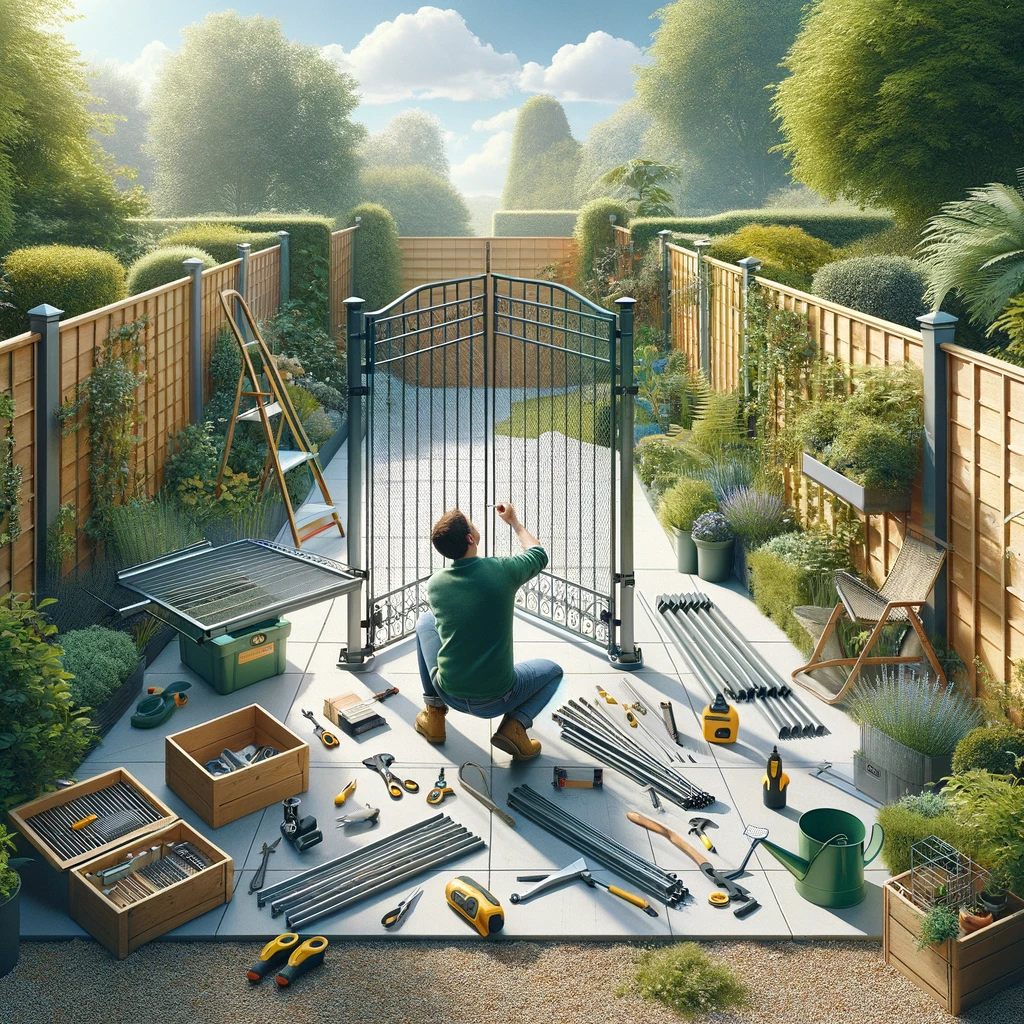
What Is The Easiest Fence To Install Yourself In The UK?
For DIY enthusiasts in the UK, the easiest fence types to install yourself include chain link, vinyl, wood, composite, and metal fences.
Chain link fences are popular for their simplicity and cost-effectiveness.
Vinyl fences, on the other hand, offer durability with minimal maintenance required, ideal for the unpredictable UK weather.
Wood fences bring a traditional charm while blending well with British properties.
Composite fences combine the best of both worlds – the natural look of wood with the low maintenance qualities of plastic.
Metal fences, such as wrought iron or aluminium, provide a secure and elegant boundary for UK homes.
When choosing a fence, consider the property type and purpose. For DIY installation, ensure you have the right tools and materials, follow manufacturer instructions carefully, and prioritize safety.
Chain Link Fences
Chain link fences stand out as one of the easiest and most cost-effective fencing options to install yourself in the UK.
If you’re looking to improve the security and boundaries of your property without breaking the bank, a chain link fence could be the ideal solution. The process of installing these fences is relatively straightforward and beginner-friendly. Here are some step-by-step instructions for DIY installation:
- Start by marking the perimeter where you plan to install the fence, using stakes and a string line for accuracy.
- Dig holes for the fence posts at regular intervals, ensuring they are deep enough to provide stability.
- Insert the posts into the holes and secure them with concrete to ensure they remain sturdy.
- Attach the top rails and tension bands to the posts, then unroll the chain link fabric and secure it to the top rail.
- Stretch the fabric along the fence line and attach it securely, making any necessary adjustments for a tight fit.
- Add the bottom tension wire and install any gates or accessories needed for your specific requirements.
With its strength, durability, and classic appearance, a chain link fence can add value to any property while providing a secure boundary for your home or business.
Vinyl Fences
Vinyl fences are a popular choice for DIY installation in the UK due to their ease of setup and affordability.
Setting up vinyl panels is straightforward, as they often come in pre-assembled sections that can be easily connected. This makes the installation process quick and hassle-free even for beginners. Vinyl fences are known for their cost-effectiveness, requiring minimal maintenance compared to other materials like wood or metal.
The range of design options available with vinyl fences is also a significant advantage. Homeowners can choose from various styles, colours, and textures to complement their property’s aesthetics. Whether you prefer a classic white picket fence or a modern privacy design, vinyl fences offer versatile choices to suit different preferences.
Wood Fences
Wood fences, especially lap panel and picket designs, offer DIY enthusiasts in the UK a straightforward installation process with a touch of traditional charm.
- When embarking on a wooden fence installation project, individuals can take advantage of the simplicity that lap panel and picket styles offer.
- Lap panel fences, with their overlapping horizontal boards, are not only visually appealing but also relatively easy to assemble.
- Picket fences, known for their charming spaced vertical boards, add a classic touch to any outdoor space.
Handling wood panels and posts requires basic tools like a saw, hammer, and nails, ensuring a smooth installation process. Staining or painting the fence at the end delivers a polished, customised look. Perfect for enhancing privacy or defining boundaries, wooden fences can be a gratifying DIY endeavour.
Composite Fences
Composite fences are an excellent choice for DIY installation in the UK, offering a blend of durability, aesthetic appeal, and privacy features.
These innovative fences are crafted from a mixture of wood fibres and plastic, ensuring they are resistant to rot, decay, and insects, making them ideal for the ever-changing UK weather. The composite materials mimic the look of natural wood, providing an elegant touch to any outdoor space without the hassle of regular maintenance.
The privacy enhancements of composite fences make them perfect for creating secluded areas in your garden or yard, shielding you from prying eyes and loud noises. Installing these fences is relatively straightforward, with panels that can be easily attached to posts using standard tools.
Metal Fences
Metal fences provide UK homeowners with a secure and stylish fencing solution that can be easily installed as a DIY project.
One of the key advantages of opting for metal fences, especially for DIY installation in the UK, is the high level of security they offer. The strong and durable nature of metal panels and posts acts as a reliable barrier to deter intruders and enhance the safety of your property.
Metal fences are renowned for their aesthetic appeal. Available in various designs and finishes, these fences can add a touch of elegance to your outdoor space while seamlessly blending with different architectural styles.
For homeowners looking to clearly define property boundaries, metal fences are an ideal choice. The sturdy construction of these fences makes them an effective means of marking boundaries with durability and longevity in mind.
When embarking on a DIY installation project for metal fences, it is crucial to ensure proper setup of the metal posts and panels. Start by accurately measuring the area where the fence will be installed, and then securely fix the metal posts into the ground using concrete for stability.
Next, attach the metal panels to the posts, ensuring they are level and evenly spaced for a polished finish. Regular maintenance, including cleaning and repainting when needed, will help preserve the appearance and integrity of your metal fence for years to come.
What Are The Steps To Install A Fence Yourself?
Embarking on a DIY fence installation project involves several key steps to ensure a successful outcome for your property.
Before starting the installation process, it’s essential to plan meticulously. Begin by accurately measuring the area where the fence will be placed. Use a measuring tape, and mark the boundaries clearly. This step will help you determine the quantity of materials needed.
Once you have the measurements, the next vital step is digging holes for the fence posts. Ensure the holes are deep enough for stability, typically around one-third of the post length. A post hole digger can make this task easier and more precise.
Setting the posts securely is crucial for the fence’s durability. Use a level to ensure the posts are straight and at the correct height. Consider using concrete to secure the posts firmly in place.
Attaching the fence panels is the next stage. Align each panel correctly and attach it securely to the posts using appropriate fasteners. This step requires attention to detail to ensure a uniform and aesthetically pleasing appearance.
Add the finishing touches to your fence. This can include painting or staining the panels, adding post caps for a polished look, and checking for any loose screws or nails. Take your time with these final touches to complete the project with finesse.
Planning And Preparation
The initial stage of any DIY fence installation project involves meticulous planning and thorough preparation of the property.
Assessing the property boundaries is crucial to determine the exact location and dimensions of the fence. Understanding any underground utilities or potential obstacles can prevent costly mistakes later on. Additionally, considering the overall landscaping and property features is essential to ensure that the fence complements the aesthetics of the surroundings.
Before starting the installation, gather all the necessary tools and materials required for the project. This may include fence panels, posts, concrete, screws, and tools like a spirit level, post hole digger, and saw. Organising everything beforehand can streamline the process and prevent interruptions.
Marking And Measuring
Accurate marking and precise measurements are essential steps in ensuring a well-aligned and visually appealing fence installation.
Before starting the marking process, it is crucial to determine the property boundaries and any underground utilities to avoid any interference with the fence layout. Using stakes and strings can help create straight lines and right angles for accurate placement of fence posts. Double-checking measurements and adjusting as necessary will ensure that the fence is level and follows the intended path. Taking the time to carefully establish the boundary lines will result in a professional finish that enhances the overall look of the property.
Digging Holes And Setting Posts
Digging holes to set sturdy posts forms the foundation of a secure and durable fence installation.
When digging post holes, it is essential to ensure they are deep enough for the posts to withstand changing weather conditions and provide stability. A general rule of thumb is to make the hole depth about one-third to one-half the length of the post above ground.
It is advisable to use a posthole digger, which makes the task easier and more precise. Begin by marking the positions of the holes accurately using a string line and stakes.
Once the holes are dug to the appropriate depth, carefully place the posts ensuring they are plumb and level before securing them. Concrete is commonly used to set the posts securely in place.
Attaching Panels
Attaching fence panels to the installed posts is a crucial step in completing the fencing structure for your property.
Regarding attaching fence panels, precision is key. Start by placing the first panel against the post, ensuring it is level and plumb. Use a level to double-check the alignment. Next, secure the panel to the post using appropriate fasteners based on the material of your fence panels.
For wooden fence panels, consider using corrosion-resistant screws or nails to prevent rust and ensure durability. For metal panels, specialised brackets or clips may be needed for a secure attachment.
Proper spacing between panels is essential for aesthetics and functionality. Maintain consistent spacing to avoid gaps or overlaps that can compromise the visual appeal and structural integrity of your fence.
Remember to follow manufacturer instructions for installation, especially regarding post depth and panel height requirements. This ensures a secure and long-lasting fence that enhances the overall look of your property.
Finishing Touches
Adding finishing touches to your installed fence enhances its overall appearance and ensures a polished final result.
Once your fence installation is complete, consider painting or staining the materials to protect them from the elements and enhance their longevity. Choosing a colour that complements your property’s exterior can tie the whole look together beautifully. Adding decorative landscaping around the fence, such as plants, shrubs, or flowers, can soften its edges and create a more inviting feel. Don’t forget about lighting fixtures to illuminate the fence at night, or consider adding trellises, gates, or arbours for a touch of sophistication.

